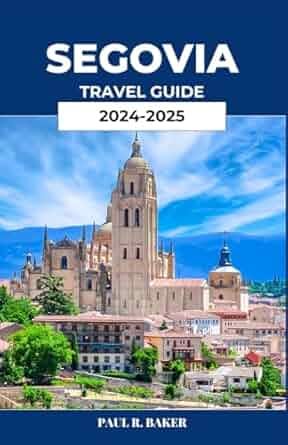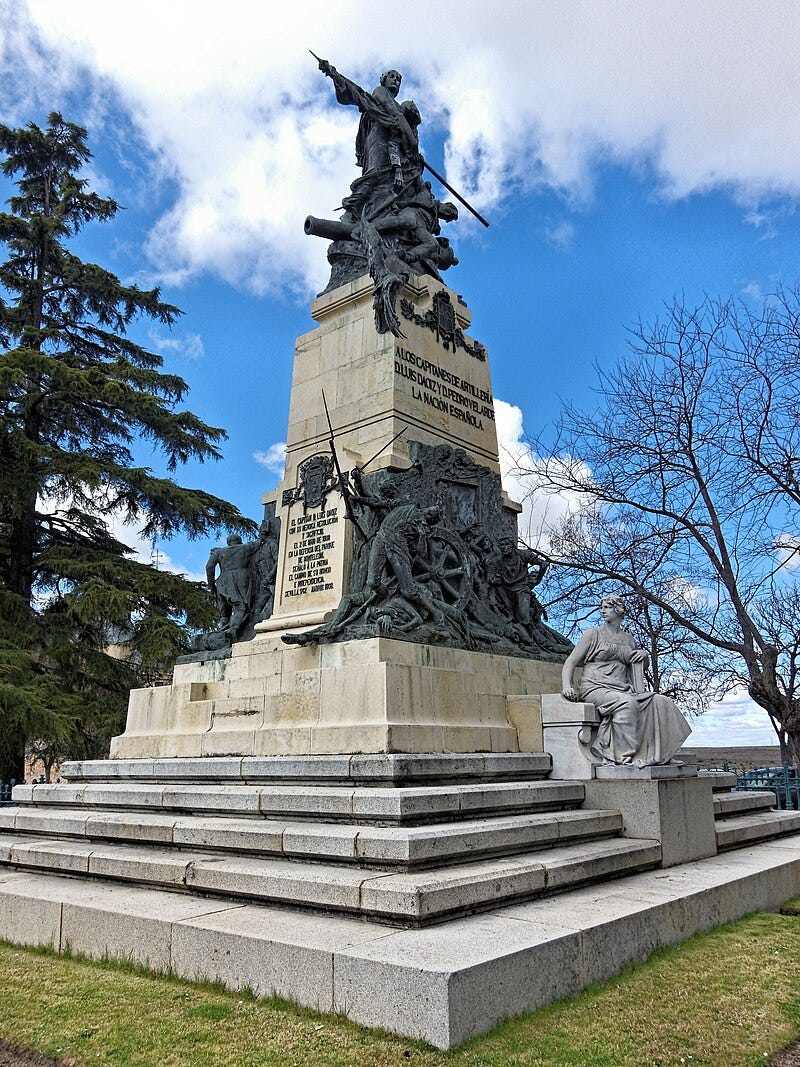Segovia: a forgotten city of wonders
In Segovia, history isn’t just remembered, it still stands, carved in stone, crowned in spires, and seen through arches that have defied time itself.
Welcome to Thursday's edition of The Culture Explorer. Today, our guest writer World Scholar takes us on a journey through the beautiful and historic city of Segovia. From Roman engineering to medieval charm, it's a city shaped by centuries.
Later in the premium section, we uncover a lesser-known legend: the Templar curse of Segovia—a haunting tale involving crows, desecrated tombs, and a church built to house the True Cross.
Segovia is a small city, but it holds one of the greatest collections of architectural wonders in Spain.
Its Roman aqueduct is among the best-preserved in the world. Its Alcázar is so extravagant that it inspired Cinderella’s Castle at Walt Disney. And its Gothic cathedral was one of the last ever built in Europe.
Here’s a look into the 3 architectural masterpieces that define Segovia…
The Aqueduct of Segovia
There are no nails, no mortar, no cement. Just 24,000 granite blocks fitted together with incredible precision, allowing it to stand for almost 2,000 years.
The aqueduct of Segovia was built under the Roman Empire, probably during the reign of either Domitian, Nerva, or Trajan — sometime between 81 and 117 AD. Its purpose was simple: to transport water from the Frío River, about 17 kilometers away, into the city.
What remains today is said to be most dramatic section — and rightly so. Over 160 arches are still standing in the city’s Plaza del Azoguejo. This is also where it reaches its highest point, rising 28.5 meters.
Each block is granite, cut from the nearby Guadarrama mountains. The Romans shaped them so precisely that they interlock under nothing but the force of gravity. The engineering behind this was known as opus quadratum (squared stone construction) and it was the standard for many monumental Roman structures, such as the Pont du Gard aqueduct, in France.
Very few Roman aqueducts still stand in urban centers. Even fewer are as intact as this one. This is why the aqueduct of Segovia is such an impressive marvel of ancient engineering.
What is also quite interesting, is that the aqueduct is nicknamed ‘Puente de Diable’ or “Devil’s Bridge.” Legend says that a servant girl, tired of fetching water daily, struck a deal with the Devil: he’d build a bridge overnight in exchange for her soul. He got to work but as dawn neared, just one stone remained and the aqueduct stood unfinished, yet the girl’s life was saved.
The Alcázar of Segovia
No doubt, the Alcázar is one of the most iconic castles, in Europe and the whole world. Unlike the angular fortresses of England or the high towers of Germany, the Alcázar blends elements of Romanesque, Gothic, Mudéjar and Renaissance styles.
Its name comes from the Arabic word “al-qasr,” literally meaning fortress. Its history around the 7th and 8th centuries, where Moorish forces built a stronghold on top of what we think may have been a Roman fort. On the same site, the current structure was built by King Alfonso VI in the 11th century, just after Christian forces recaptured Segovia in the Reconquista. It was also here that Queen Isabella I would be proclaimed queen in 1474, an event that led to the unification of Spain.
Some say the interior is just as impressive as the exterior. Much of the inside is richly decorated in Mudéjar patterns (an Islamic-influenced style that was used throughout Christian Spain). The Hall of the Kings contains a frieze of 52 medieval monarchs. The Throne Room is guarded by twin lion thrones.
The spires and slate roofs that are arguably its most iconic features were only added in the 15th century, giving it that “fairytale” silhouette that later inspired Disney’s Cinderella Castle. But what stands today is not the original — but an 1882 reconstruction.
A fire rampaged through the Alcazar in 1862 the roof and some of the original rooms completely destroyed. 20 years later, original plans were used to rebuild the Neo-Gothic castle to truly make it seem like an old-world wonder.
Segovia Cathedral
Completed in 1577, it is often called the last Gothic cathedral in Europe, at a time when most of Europe had already moved on to the Renaissance.
It stands at the highest point of the city, the Plaza Mayor, but not just for symbolism. After the original Romanesque cathedral (which stood near the Alcázar) was destroyed during the Revolt of the Comuneros in 1520), this new site was chosen to make defense easier.
Something to note is the style — this cathedral was built not just in Gothic. But more specifically, late Flamboyant Gothic. Plus its layout follows the classic Latin cross, with three naves and an ambulatory. Its buttresses are flying, its vaults ribbed (plus its stained glass windows are original), something you’ll be struggling to find in any other Spanish cathedrals.
Inside, the proportions are truly immense: the nave is 33 meters high. There are 18 chapels in total, each with its own altarpiece. The main altar is Baroque, while the choir stalls are Gothic woodwork from the 15th century, salvaged from the earlier cathedral.
One of the most remarkable features is the dome, which was added in the 17th century. It doesn’t match the original Gothic plan but its dark slate contrasts quite nicely with the golden limestone so it often goes disregarded. From a distance, it looks like a crown placed upon the head of the city.
During the Spanish Civil War, the cathedral was shelled but remained standing. Its preservation today is what makes it one of the most beloved architectural marvels in Spain.
Segovia might not be as famous Barcelona, Granada or Seville but it's a city worth of praise for its impressive blend of history.
The Romans gave it aqueducts.
The Castilian kings built its castle.
And religion crowned it with Gothic spires.
There are few places that can go unnoticed on a map yet can boast such a cultural record.
“When we postulate invincible ignorance on the subject of baptism or of the Christian faith, it does not follow that a person can be saved without baptism or the Christian faith. For the aborigines to whom no preaching of the faith or Christian religion has come will be damned for mortal sins or for idolatry, but not for the sin of unbelief. As St. Thomas says, however, if they do what in them lies, accompanied by a good life according to the law of nature, it is consistent with God's providence that he will illuminate them regarding the name of Christ.”
Francisco de Vitoria
Art
Keep reading with a 7-day free trial
Subscribe to The Culture Explorer to keep reading this post and get 7 days of free access to the full post archives.












